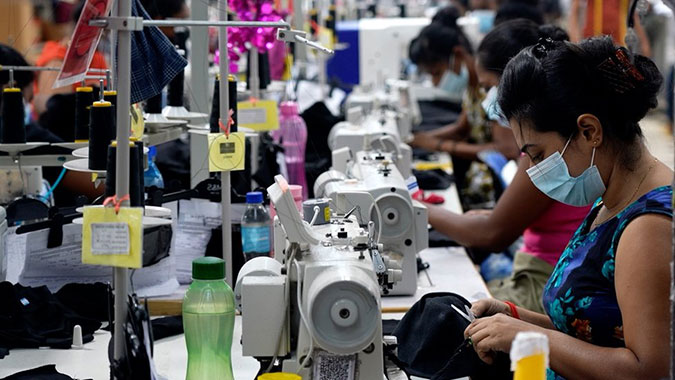NEWS
Garment workers face job losses as Lankan factories lose to Bangladesh amid slowdown

Global economic shocks that decimated apparel demand prompted factories to lay off workers in an industry that accounted for half of Lanka’s export revenue in 2022, said a report by The South China Morning Post yesterday.
The report said: Sri Lanka’s garment sector made up almost half its export revenue last year, after remaining resilient even through the pandemic and the country’s debilitating economic crisis.But shocks in the international market have led to a plunge in demand, prompting factories to lay off hundreds of employees.
For one such worker, who wished to be known as Sunil, the loss of income came as a blow but he felt his youth was an advantage in the job hunt. For senior workers, especially older women, the likelihood of being employed again was low, he said.
Although the large manufacturer he worked at gave each worker a redundancy payout ranging from 100,000 to 150,000 Sri Lankan rupees (US$310-470), Sunil said it was not enough for any family to survive on. “Compensation cannot [match] the loss of permanent income,” he said.
Apparel is one of the biggest export earners in Sri Lanka, an industry that produces goods for major global retailers such as Marks & Spencer, Victoria’s Secret and Nike, among other brands. Last year, the sector accounted for some 46 per cent of Sri Lankan export revenues, or US$5.93 billion.
But amid a challenging global economy, year-on-year export volumes shrank about 11 per cent by March this year, industry statistics showed. Softening market conditions in the United States, European Union and Britain; fears of a global recession; and the Russia-Ukraine war accounted for a sharp contraction in demand, said Yohan Lawrence, head of the Joint Apparel Association Forum of Sri Lanka. But the industry has bigger worries. Data suggests Sri Lanka is losing market share to neighbouring Bangladesh, Lawrence said.
From 2021 to 2022, Sri Lanka’s export revenue rose by 10 per cent, from some US$5.07 billion to US$5.59 billion, while that of Bangladesh grew by 28 per cent, from US$35 billion to US$45 billion.The fact Bangladesh’s growth accounted for almost double of Sri Lanka’s entire market share was deeply worrying. “If that does not frighten [the country], I don’t know what does,” Lawrence said.
Trade agreements are at the core of this dynamic, since Bangladesh as a least developed country (LCD) holds more preferential trade terms, and could export apparel free of duty to the EU and the UK under the “Everything but Arms (EBA)” trade agreements.
Sri Lanka, however, trades under the Generalised System of Preferences, which comes with conditions based on the rules of origin.Sri Lanka’s garment sector made up almost half its export revenue last year, after remaining resilient even through the pandemic and the country’s debilitating economic crisis.
But shocks in the international market have led to a plunge in demand, prompting factories to lay off hundreds of employees.For one such worker, who wished to be known as Sunil, the loss of income came as a blow but he felt his youth was an advantage in the job hunt. For senior workers, especially older women, the likelihood of being employed again was low, he said.
Apparel is one of the biggest export earners in Sri Lanka, producing goods for the likes of Marks and Spencer, Victoria’s Secret and Nike. Photo: ReutersAlthough the large manufacturer he worked at gave each worker a redundancy payout ranging from 100,000 to 150,000 Sri Lankan rupees (US$310-470), Sunil said it was not enough for any family to survive on. “Compensation cannot [match] the loss of permanent income,” he said.
